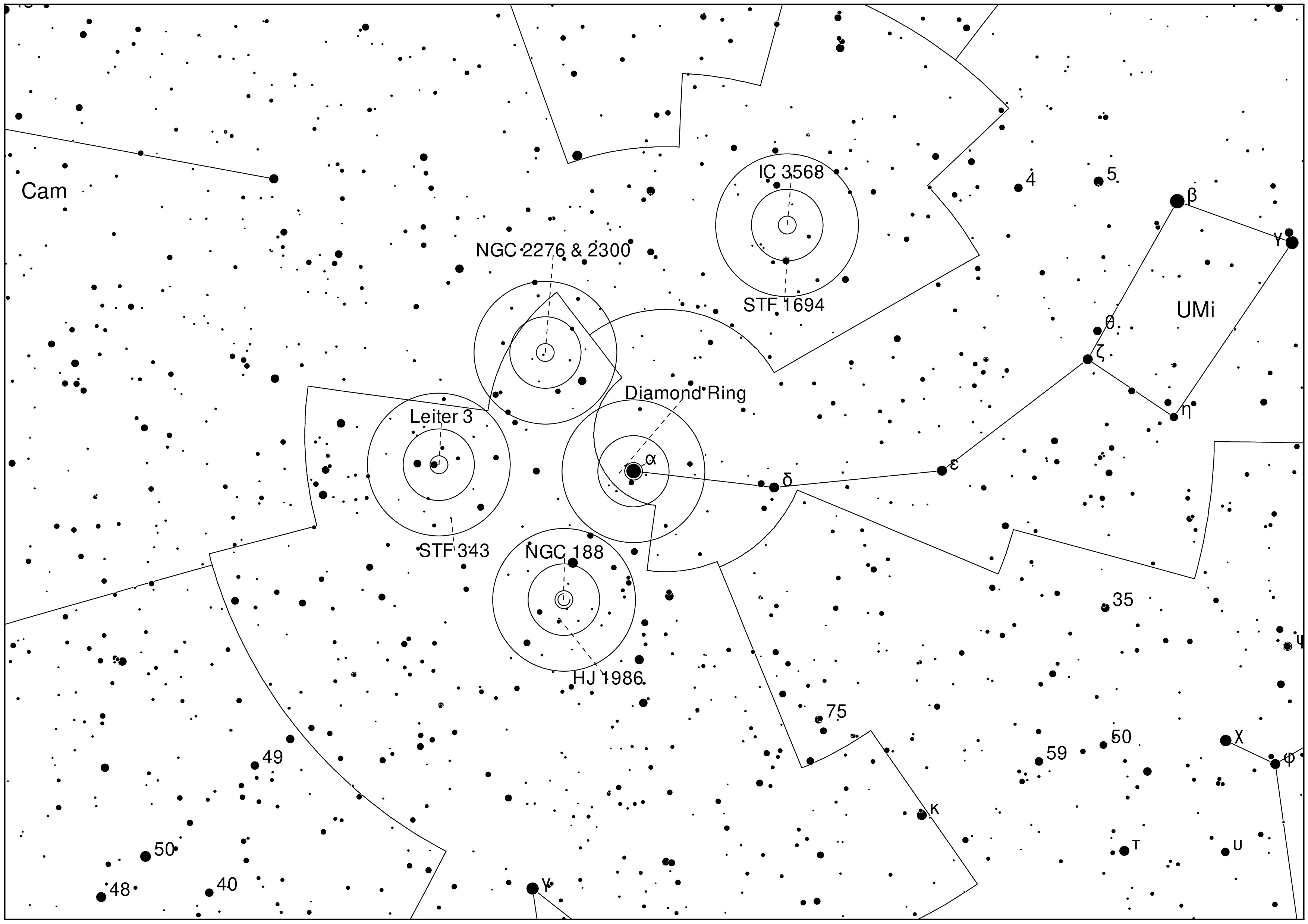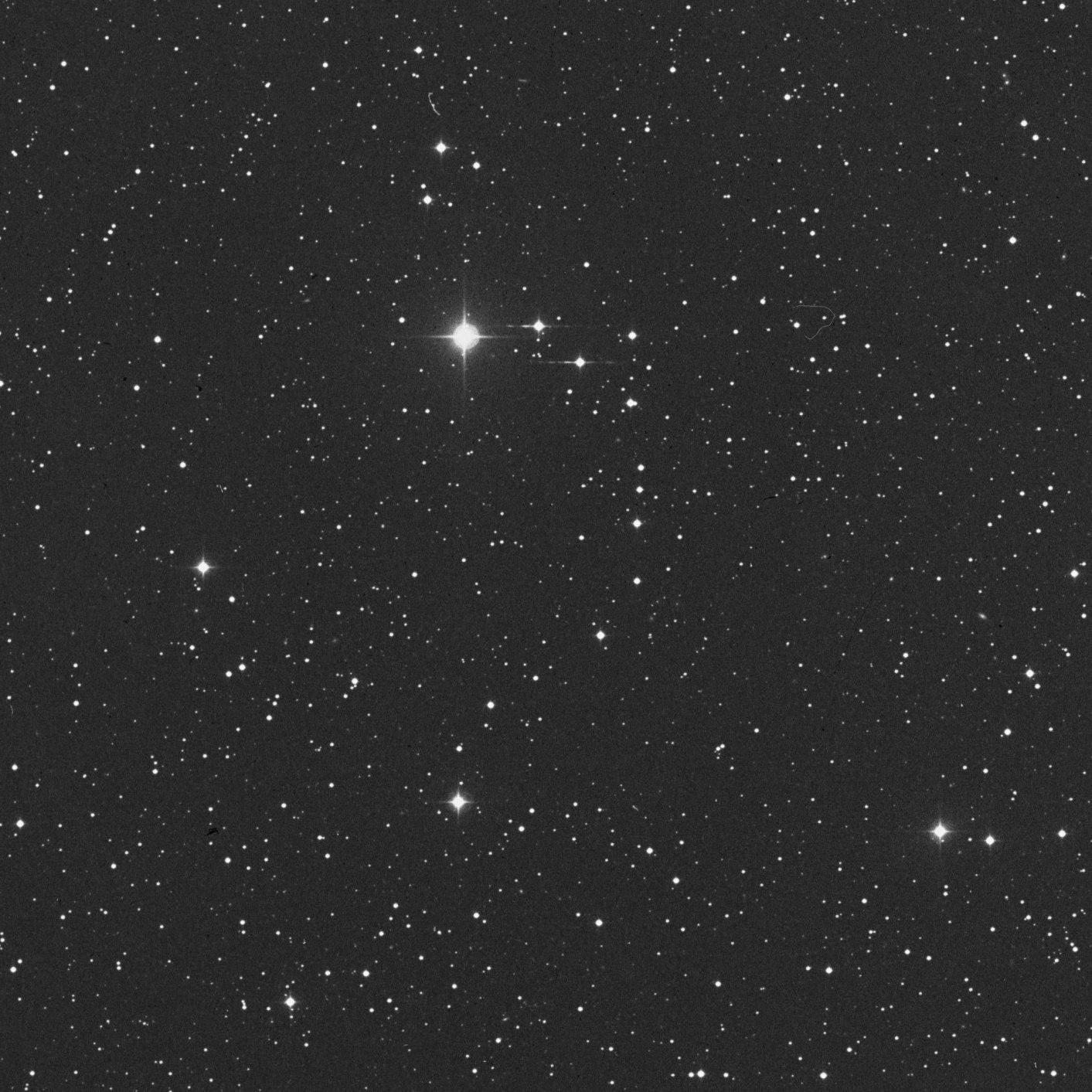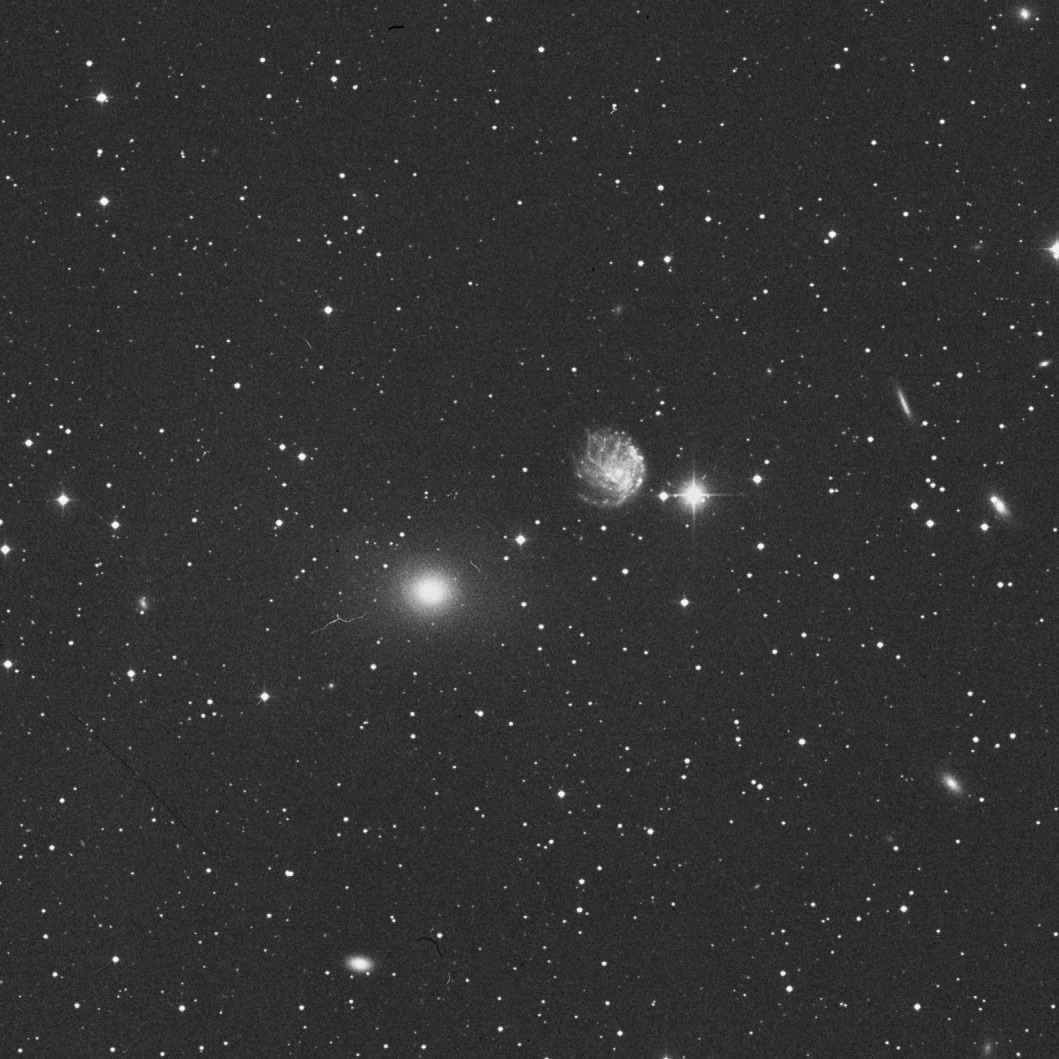Skyguide - Selected objects for every season
The Skyguide is primarily intended to give suggestions for your own observations and will briefly describe selected objects for each season of the year. Both easy and difficult objects will be selected. How difficult an object is depends of course on several factors, especially sky quality, telescope aperture and experience of the observer.
For each object the most important information is given in short form. These are supplemented by photos or sketches. Furthermore, a map, created with the free software Cartes du Ciel (Skychart), is available for a rough orientation. In general, I recommend, to create your own finder charts. The visual description of the object is based mainly on own observations and should serve only as a starting point.
Skyguide 2023-1 (Spring)
Observers without automatic tracking of the telescope can be happy this time, because we are close to the northern celestial pole. This region may seem less attractive to some, but still offers a few interesting objects that can be observed all year round. Let's start with the most obvious object: Alpha Ursae Minoris (Polaris). With a magnitude of about 2m.0 and a current distance to the northern celestial pole of less than 40 arcminutes it is perfectly suited for rough alignment of equatorial mounts, but also for optical testing of telescopes by star tests. In addition, Polaris is a visual double star whose primary component is itself a very close physical double star. At 18.4 arcseconds apart, the wide pair can be separated in any telescope. The brightness difference of about 7 magnitudes is comparatively large. The companion appears quite faint and clearly detached next to the bright primary component.
For the next object we just stay with Polaris. Starting from it towards southwest, nearly a dozen stars form a slightly oval ring with an apparent diameter of about one degree. This asterism is called “Diamond Ring”, Harrington 1 or “Engagement Ring”, Polaris being the shining diamond. Visually, the ring is quite striking. Only a few stars away from the ideal ring disturb the overall impression a bit. Because of the apparent size the magnification should be chosen low. Binoculars are sufficient if the sky is not too bright.
A few degrees away from Polaris is the open star cluster NGC 188 (Polarissima Cluster, 8m.1). It is located far away from the plane of the Milky Way and belongs to the oldest open star clusters with 6.3 billion years. The members are all rather faint, so the cluster requires a rather dark sky for visual observations. Under such conditions it is visible in binoculars as a dim brightening. In telescopes with 6 inch aperture and larger several individual stars are visible.
Moving further east around Polaris, we find the asterism Leiter 3 (04h28m50s / +83°56'38"). Because of its shape it is also called “The Gallows”. Some stars up to about 12m.0 form a gallows, even a supporting beam at the upper end was thought of. Only the beam towards the ground could be a bit straighter. A little gallows humor can also make things interesting in astronomy. With a 6 inch refractor the asterism can be observed well under urban conditions (Bortle 6) and the gallows takes its shape. About a dozen stars are visible.
We continue our circle around Polaris and stop at the galaxies NGC 2276 (11m.4) and NGC 2300 (11m.0). Interestingly, NGC 2276 is listed in the Arp catalog under Arp 25 (galaxy with one heavy arm) and together with NGC 2300 under Arp 114 (close to and perturbing spirals). Both galaxies are assumed to be gravitationally bound. Despite similar brightnesses, NGC 2276 is much more difficult because it is barely condensed. Dark skies are likely to be more crucial here than aperture of the telescope. Under a Bortle 4 sky, however, it is readily accessible for 6 inches of telescope aperture. For details within the galaxy much more aperture is needed. NGC 2300 is easier to observe, already under Bortle 6 skies it is fairly well visible with a 6 inch refractor and high magnification as a roundish, well condensed nebula, although not very spectacular.
As a last object we briefly introduce the planetary nebula IC 3568 (UGC 7731, PGC 41662), which is also known as “Lemon Slice Nebula”. The name of the nebula finds its origin in false color photographs, in which it is shown yellow. The nebula was also included (by mistake?) in the UGC (Uppsala General Catalogue ) and PGC (Principal Galaxies Catalogue). Both catalogues generally contain only galaxies. With an apparent magnitude of 11m.1 and its small size it can be easily observed with a small refractor of only 70mm aperture under Bortle 6 skies, but still appears very compact at a magnification of 50x. Under similar conditions with a 6 inch refractor, the nebula looks like a slightly blurred star at low magnification. At high magnification of 171x, the nebula is visible as a clear disk. It shows a bright, homogeneous, round inner region with a slightly diffuse edge, which is surrounded by a much fainter, very diffuse halo. Under dark skies a binocular will be sufficient for a sighting.
Beside the objects presented here it is worth to observe some double stars which are on the way of this tour. For example HJ 1986, STF 343 as well as STF 1694 are a small selection of worthwhile double stars, which can also be observed well with binoculars and show a decent but nice color contrast in the telescope. On the working group page you can find information and observations of these and many other double stars under the “Double Star Project”.
In this sense happy circling around Polaris and have fun observing.




